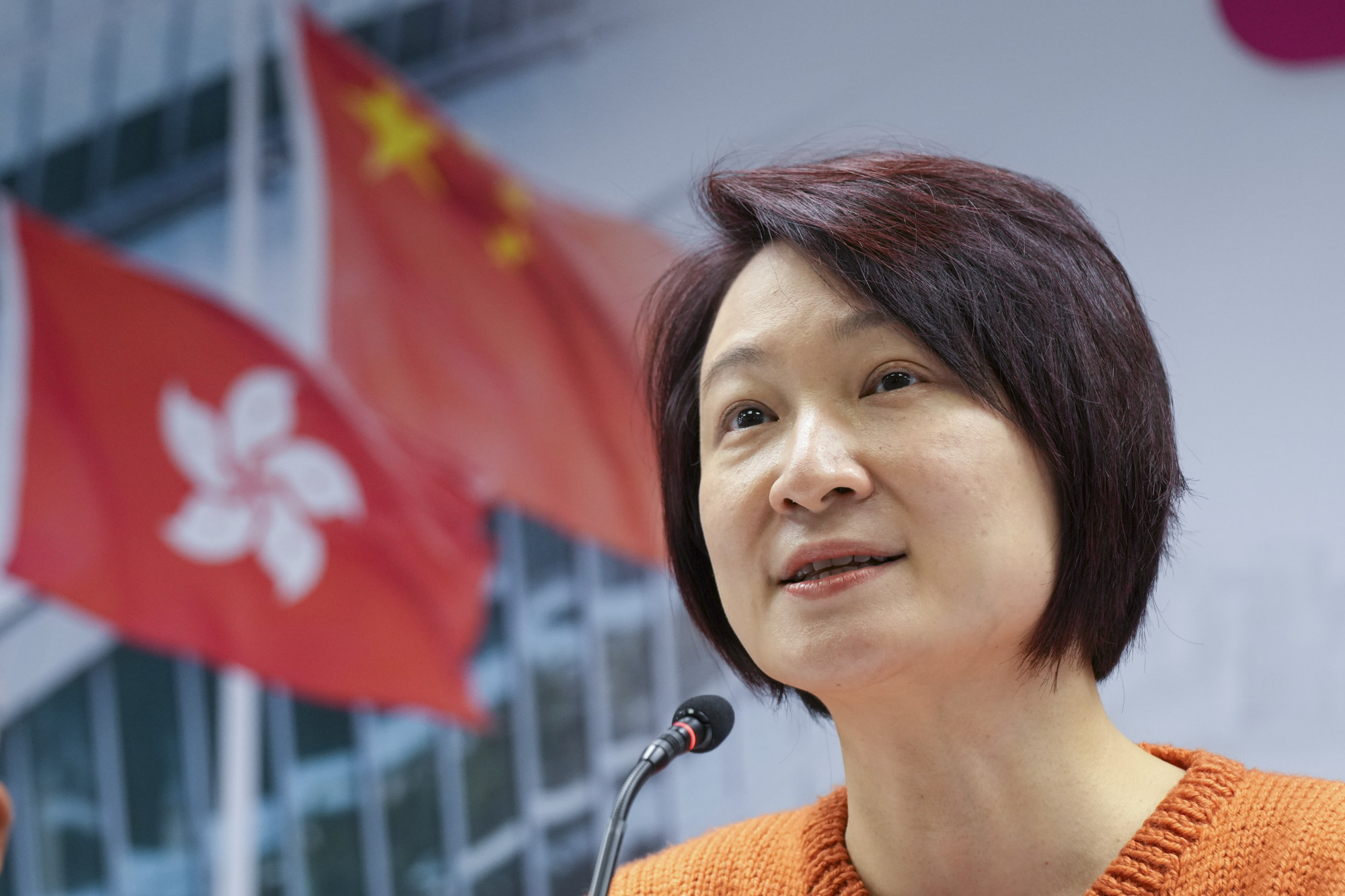
Why do mainland Chinese tourists no longer find Hong Kong cool? Luxury goods lose appeal and only way to win them back may be unique experiences
- Visitors no longer crossing border simply to shop in same numbers as before, with some choosing instead to travel closer to home
- Industry experts say city must diversify its offerings by promoting neighbourhood charms and outdoor attractions, while giving tourists more options for digital payment
But the 34-year-old from Shandong province was dismayed to find that the items she liked cost 20 to 30 per cent more than in Japan or South Korea where they were made.
“Even though Hong Kong is closer, it has become less and less worth the trip,” she said.
She ended up buying popular over-the-counter medications such as White Flower Oil and Po Chai Pills, saying mainlanders trusted the city’s pharmacies.

They also made up four-fifths of the 2.4 million visitors last month, according to the Hong Kong Tourism Board.
After three years of harsh travel restrictions and lockdowns which kept visitors away, the tourism industry is impatient for recovery.
Mainlanders made up the biggest group of visitors in better times, with 51 million arriving in 2018 alone, and the city’s attractions, retailers and food and beverage sector have long anticipated their return.
Eateries struggle as Hongkongers travel and mainland Chinese visitors stay home
While they have begun reappearing, mainlanders seem to have changed in some ways. As shoppers, they have become used to browsing online and buying luxury goods at home. When eating out, they expect Hong Kong service staff to speak Mandarin.
Mainlanders have been heading to two new museums that opened during the pandemic in the West Kowloon Cultural District – M+, which focuses on 20th and 21st-century visual culture, and the Palace Museum showcasing artefacts from the National Palace Museum in Beijing.

Travel agents across the border told the Post that demand for tours in the city was lower than for other destinations, with some mainlanders preferring destinations such as Xiamen in Fujian province and Yunnan province, even though they cost more than Hong Kong packages.
Tourism lawmaker Perry Yiu Pak-leung said Hong Kong was still in “the first stage of recovery” after the pandemic and expected it to reach between 60 and 70 per cent of the 2018 level of visitors by the end of the year.
“Now we cannot just rely on shopping to attract tourists to Hong Kong. We need to diversify,” he said.
Borders are open, so why aren’t mainlanders flying into Hong Kong?
As Easter was not a holiday on the mainland, the city’s tourism industry was now pinning its hopes on the May 1 Labour Day break as a test of whether mainlanders would return.
No longer a shopper’s paradise?
Yu Ai, a Beijing businesswoman in her forties, recalled how she used to visit Hong Kong at least once a year and even bought a diamond ring in the city for her wedding in the early 2010s.
Speaking to the Post over the phone, she said she used to shop for jewellery, luxury watches, handbags and healthcare products.
“Hong Kong no longer has the charm it used to have,” she said.
Call to cap mainland Chinese budget tours to Hong Kong criticised as step too far
What changed during the pandemic was that many luxury brands that mainlanders used to buy in Hong Kong, from Hermes to Gucci, Yves St Laurent, Coach and Diesel, expanded their presence on the mainland and many widened their e-commerce offerings too.
Beijing also lowered import tariffs on luxury goods in 2018 and 2019, making handbags, for example, only about 10 to 20 per cent costlier on the mainland than in Hong Kong, whereas they used to be marked up heftily by 50 to 60 per cent.
By 2025, luxury brands will be able to operate their own duty-free stores in Hainan, rather than rely on partnerships with local players.
Why do mainland tourists visit Hong Kong? McKinsey finds many reasons
“If they can go to Hainan to shop, tell me why they need to come to Hong Kong?” asked tourism sector veteran Freddy Yip Hing-ning, president of the Hong Kong Travel Agent Owners Association.
He said much would depend on how quickly the city regained its international aviation hub status, as many mainlanders visited Hong Kong on their way somewhere else.
“Hong Kong can become as prosperous as before, but it all depends on how soon the government can work with airline, cruise, train and bus companies to increase frequencies and destinations to bring people to Hong Kong,” Yip said.
Hong Kong retail sales jump 31 per cent year on year in February
Online booking platform Klook saw a 70 per cent spike in mainland users’ air ticket bookings to Hong Kong from January to March this year compared with the last three months of last year, with others travelling via train and bus.
During the Easter holiday period, the top attractions for mainlanders, in terms of ticket bookings, were Hong Kong Disneyland, the Hong Kong Palace museum and M+.
Klook general manager Kenny Sham Ho-ki said: “While shopping remains an important part of the travel experience for many mainland tourists, there has been a shift towards more experiential travel, with activities such as sightseeing, outdoor adventures and cultural experiences. Restaurants and good food are still very iconic for Hong Kong.”
Hong Kong’s catering, retail sectors need 100,000 workers, industry chiefs say
Confident that mainlanders would continue to come, he said the city needed to re-engage and reconnect with the outside world more actively.
“More efforts can be made to promote lesser known attractions, discovering the beauty of Hong Kong’s natural environment and using the two new drawcards of M+ and Hong Kong Palace Museum in more creative ways,” he said.
Gary Ng Cheuk-yan, a senior economist at Natixis Corporate and Investment Bank, agreed that environmental tourism and promoting the city’s hiking spots could work.
“I cannot think of many places where you can go to see a beautiful mountain within one hour of leaving the city,” he said.
2 Hong Kong restaurants to hire staff to reduce crowds of mainland Chinese tourists
Ng said that having opened up later than others, the city was playing catch-up and the path to recovery would not be quick or easy as it also faced competition from destinations such as Japan, South Korea and Thailand.
“Online spending trends, a stronger preference for domestic spending and competition with other places – all three factors will continue to plague Hong Kong as it tries to regain its position as a top destination for mainland tourists,” he said.
Social media taunts and criticisms
The recent reappearance of mainland visitors to Hong Kong has not been without some bumps.
Photos circulated online showing mainland visitors eating in groups and crowding the pavement or outside public toilets in places such as Repulse Bay.
Hongkongers were mostly amused, although some were critical.
Commenting on the sight of tourists eating instant noodles on the pavement, one online commentator asked: “No money for meals, how can they still travel?”
Another said: “These cheapskate tours are affecting Hong Kong tourism.”
Most of these visitors had arrived by coach in group tours.

Lawmaker Starry Lee Wai-king, the city’s sole delegate to China’s top legislative body, said the city needed more regulation on low-cost tours, as they did not benefit the local economy and could give other tourists a bad impression of the city.
She said budget tours were often associated with forced shopping, when tour groups had no choice but to patronise certain shops and restaurants, and that could also tarnish Hong Kong’s image.
Meanwhile, some mainland visitors took to Chinese social media to share their experiences in Hong Kong, highlighting the language barrier in a city which speaks Cantonese more than Mandarin.
Using the hashtag “Hong Kong tourism” on the e-commerce app Xiaohongshu, they filmed as they tested the ability of staff in restaurants and convenience stores in Tsim Sha Tsui and Central to take orders in Mandarin.
Hong Kong cruise company seeks more piers for on-board lunch services
Reporting the result of his “experiment”, one said: “I cannot say their attitudes are especially sincere, but the way they responded is still good. When your attitude towards them is better, they will respond nicely.”
In a post titled “Why do Hong Kong’s service staff constantly get accused of having bad attitudes?” another online commentator said many service staff could understand Mandarin, but could not speak the language well.
“Although Hong Kong has been promoting Mandarin for many years, it has not been effective,” the person said, adding that in fast-paced Hong Kong, the language barrier could “easily turn into quarrels”.
Lack of flights hampering Hong Kong tourism industry’s recovery, experts say
‘Free air tickets a great first step but ...’
A Tourism Board spokesman said it partnered with national broadcasters and social media such as Weibo, WeChat and Xiaohongshu to promote the campaign, and registration for the air ticket giveaway opened on Monday to mainland visitors from 14 cities including Beijing, Shanghai and Chengdu.
Separate efforts would target high-yield mainland visitors for Meetings, Incentives, Conventions and Exhibitions (MICE) events.
The pace of recovery for mainland visitors depended on availability of flights, but the board expected growth to pick up in the second half of the year to reach 25.8 million arrivals, close to half the 2019 level.
Cathay to dish out 80,000 return flights to residents of Southeast Asian countries
Paul Pruangkarn, chief of staff at the non-profit Pacific Asia Travel Association in Bangkok, said free air tickets were a great first step but Hong Kong could not stop there in its attempt to attract mainlanders.
“It’s extremely competitive right now in this market,” he said.
He said mainland travellers were looking for unique experiences that were new, and pointed to a tourism campaign started in 2021 that focused on the city’s neighbourhoods, as an example of something which could be more widely promoted over the border for those who did not know much about Hong Kong’s heritage and history.
More than 50 attractions and shops in Yau Ma Tei, Jordan and the West Kowloon Cultural District took part in the campaign, which featured traditional crafts, arts and culture, and authentic cuisine.
Hong Kong’s lame attempts to attract tourists and talent smack of desperation
Pruangkarn felt mainland visitors not keen on shopping would prefer exploring these aspects of Hong Kong.
“We prefer cash and credit cards, but mainlanders like WeChat Pay,” he said. “Expensive hotel rates are another reason to hesitate. We have to build more hotels, not just deluxe, but bed-and-breakfast establishments.”
He said Hong Kong also had to make it easier for tourists to find sightseeing spots, information and retail offers more easily on their smartphones.
‘Cheap and tacky’: ‘Hello Hong Kong’ tourism campaign panned by advertising experts
One mainlander looking forward to visiting Hong Kong was gym owner Zhang Zongbay, from Wuwei in Gansu province, who said he wanted to visit with his wife and five-year-old son.
With his budget of about HK$3,500 per person, the 30-something said they would travel on their own rather than take a costlier group tour.
“My son has never been to Hong Kong, we want to show him its prosperity,” he said. “There is a lot of good Cantonese food to eat and sightseeing to do.”
Additional reporting by Wynna Wong



